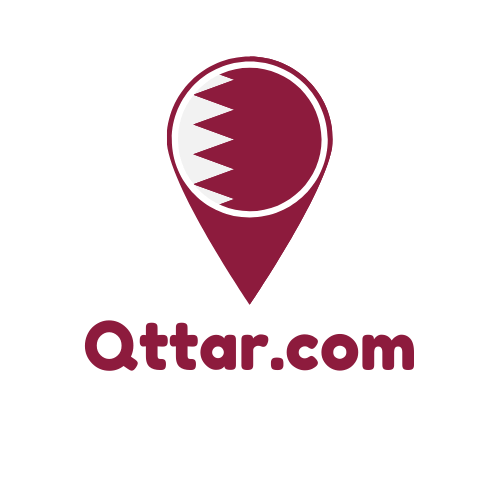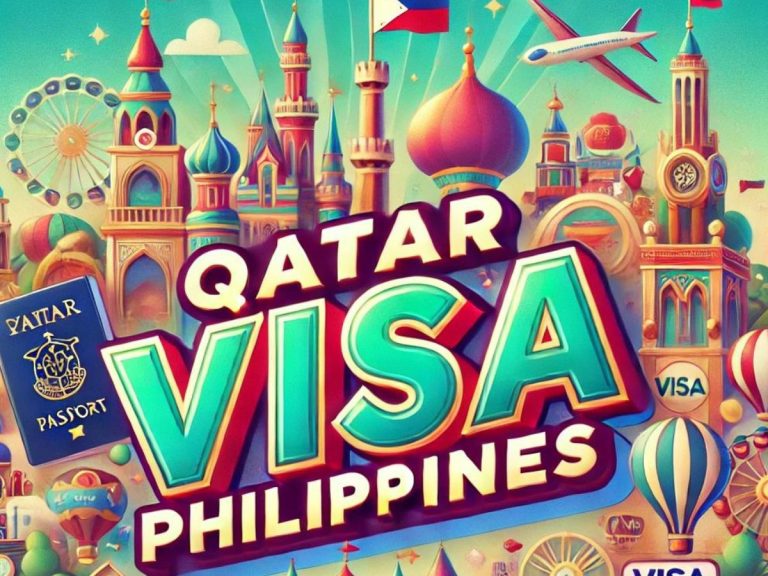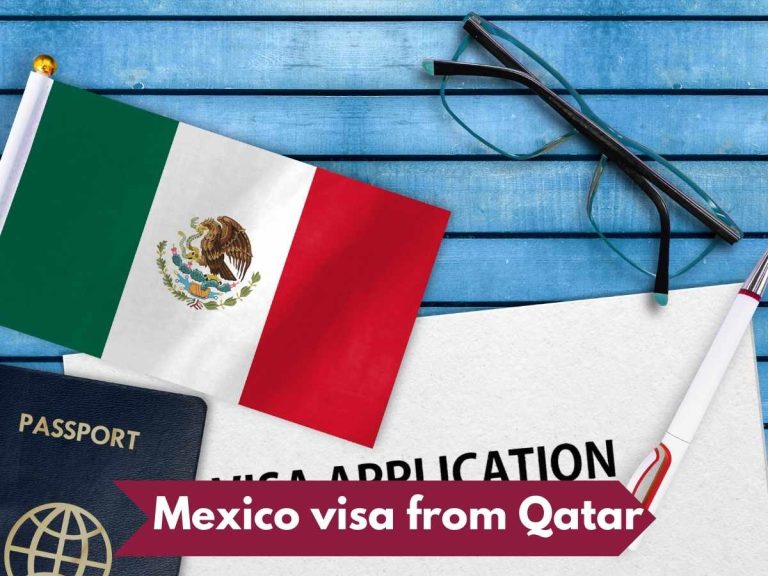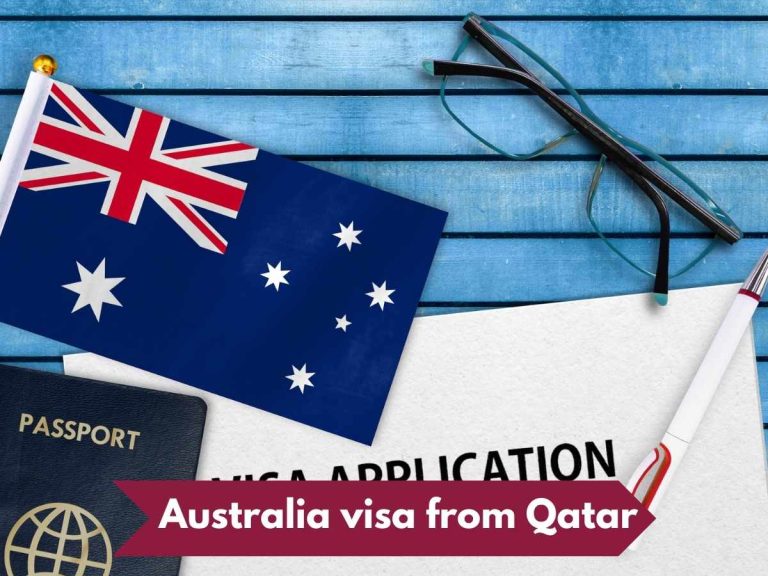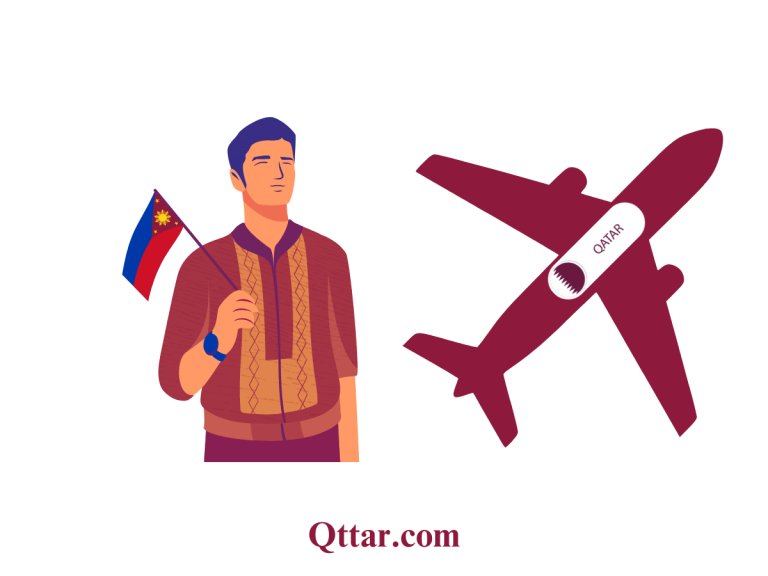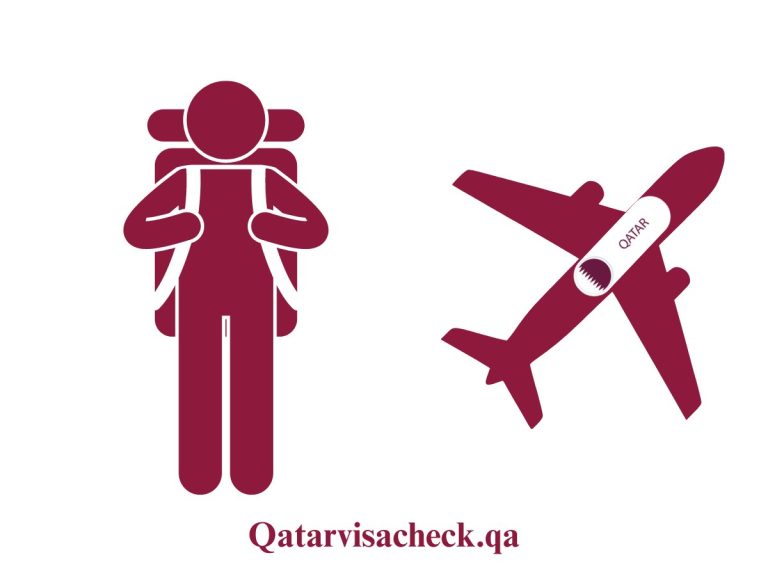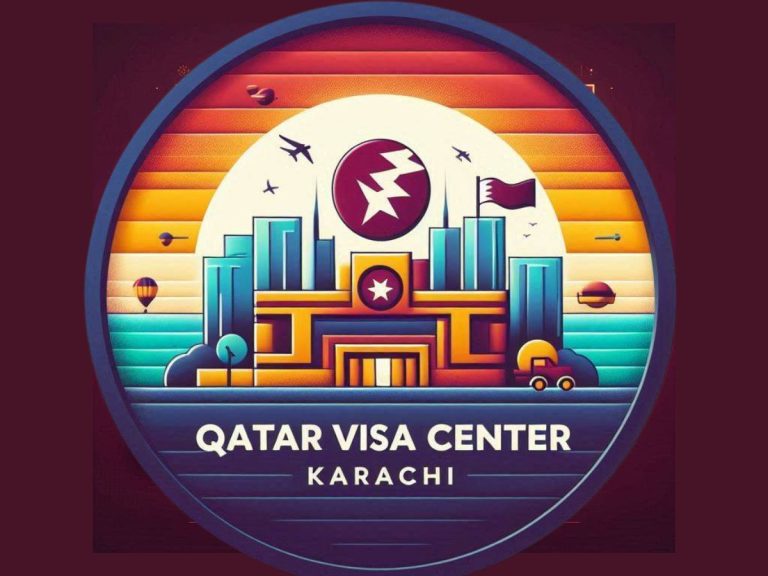Metro Map Doha Qatar 2025: All Stations Explained
The Doha Metro in Qatar consists of three lines (Red, Green, and Gold) with 37 stations covering 76 km. It connects major areas of Doha, including the airport, and operates daily with varying timings. The network is designed to provide efficient public transportation across the city.
Network Structure
The Doha Metro network comprises three main lines:
- Red Line: Runs from Al Wakra in the south to Lusail in the north, covering 40 km with 18 stations.
- Green Line: Extends from Al Mansoura to Al Riffa, spanning 22 km with 11 stations.
- Gold Line: Connects Ras Bu Abboud to Al Aziziyah, covering 14 km with 11 stations.
These lines intersect at key interchange stations, allowing passengers to transfer between lines efficiently. The most significant interchange is Msheireb station, where all three lines converge.
Key Features
- Automated driverless system
- State-of-the-art stations with modern amenities
- Integration with other public transport modes
- Supports major events like the 2022 FIFA World Cup
Future Expansion
Plans are in place to expand the network by 2026, including:
- Addition of the Blue Line
- Extension of existing lines
- Construction of approximately 60 new stations
This expansion will further enhance the metro’s coverage and connectivity across Doha and its surrounding areas.
Doha Metro Map and Stations
Red Line
The Red Line, spanning 40 km, is the longest in the Doha Metro system. It connects the following key stations:
- Lusail
- Qatar University
- Katara
- West Bay QIC
- Corniche
- Al Bidda (Interchange with Green Line)
- Msheireb (Interchange with all lines)
- Hamad International Airport
- Al Wakra
Green Line
The Green Line covers 22 km and serves several important locations:
- Al Mansoura
- Msheireb (Interchange with all lines)
- Al Bidda (Interchange with Red Line)
- Hamad Hospital
- Education City
- Qatar National Library
- Al Riffa
Gold Line
The Gold Line, stretching 14 km, connects:
- Ras Bu Abboud
- National Museum of Qatar
- Souq Waqif
- Msheireb (Interchange with all lines)
- Sport City
- Al Aziziyah
Interchange Stations
- Msheireb: Central hub connecting all three lines
- Al Bidda: Interchange between Red and Green lines
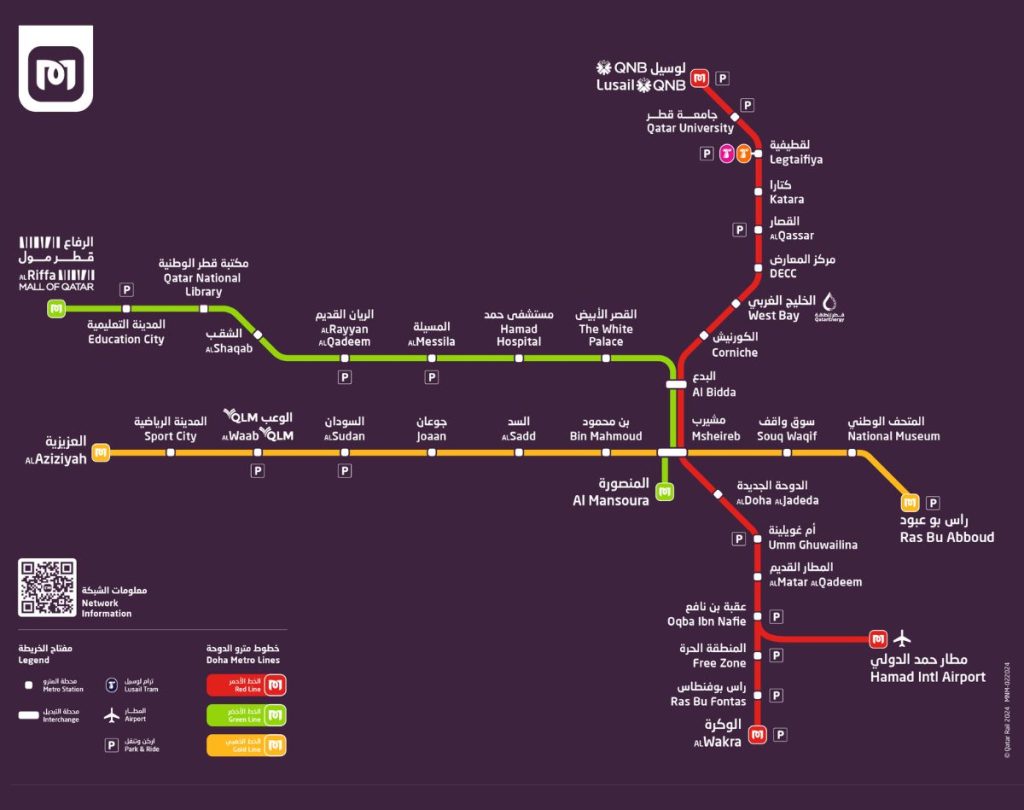
Station Amenities
Doha Metro stations are designed with passenger comfort and convenience in mind. Common features include:
- Air conditioning
- Prayer rooms
- Restrooms
- Customer information centers
- Gold Club lounges (in select stations)
- Accessibility features for passengers with special needs
Operating Hours and Frequency
The Doha Metro operates seven days a week with the following schedule:
| Day | Operating Hours |
|---|---|
| Saturday to Wednesday | 6:00 AM – 11:00 PM |
| Thursday | 6:00 AM – 12:00 AM |
| Friday | 2:00 PM – 12:00 AM |
Trains run at regular intervals to ensure efficient service:
- Peak hours: Every 5-6 minutes
- Off-peak hours: Every 7-8 minutes
Last Train Timings
It’s crucial for passengers to note the last train timings:
- Saturday to Wednesday: Last train departs at 11:00 PM
- Thursday and Friday: Last train departs at 12:00 AM
Passengers should plan their journeys accordingly to avoid missing the last train.
Fares and Ticketing
Doha Metro offers various ticket options to suit different passenger needs:
- Single Journey Ticket
- Day Pass
- Rechargeable Travel Cards (Standard and Gold Club)
As of 2024, the fare structure is as follows:
| Ticket Type | Standard Class | Gold Class |
|---|---|---|
| Single Journey | QR 2 | QR 10 |
| Day Pass | QR 6 | QR 30 |
Travel Cards
- Standard Travel Card:
- Initial cost: QR 10 (without travel credit)
- Can be purchased at vending machines in stations or licensed retailers
- Gold Club Travel Card:
- Initial cost: QR 100 (without travel credit)
- Available only at Gold Club offices in metro stations
Purchasing and Recharging
Passengers can buy and recharge their travel cards through various means:
- Ticket vending machines at all stations
- Licensed retailers (Al Meera, Lulu, Carrefour, Family Food Center, Jumbo)
- Qatar Rail mobile app (for registered cards)
- Talabat Mart (home delivery option)
Connectivity and Integration
Metrolink Bus Service
To extend the reach of the metro system, Qatar Rail operates the Metrolink bus service:
- Free shuttle buses connecting metro stations to nearby areas
- Covers a radius of 2-5 km from stations
- Frequency ranges from 6 to 20 minutes depending on the route
Park and Ride Facilities
Several metro stations offer park and ride facilities, allowing commuters to leave their vehicles and continue their journey by metro:
- Al Qassar (Red Line)
- Education City (Green Line)
- Al Wakra (Red Line)
Integration with Other Transport Modes
The Doha Metro is designed to integrate seamlessly with other public transport options:
- Buses: Connections to the wider bus network at major stations
- Taxis: Designated pickup and drop-off points at stations
- Future integration with the Lusail Tram network
Accessibility for Passengers with Special Needs
The Doha Metro is designed to be fully accessible:
- Elevators at all stations
- Tactile paths for visually impaired passengers
- Wheelchair-accessible carriages
- Priority seating in all trains
Wi-Fi Connectivity
Free Wi-Fi is available:
- In all metro stations
- On board all trains
- 30 minutes of free usage per day
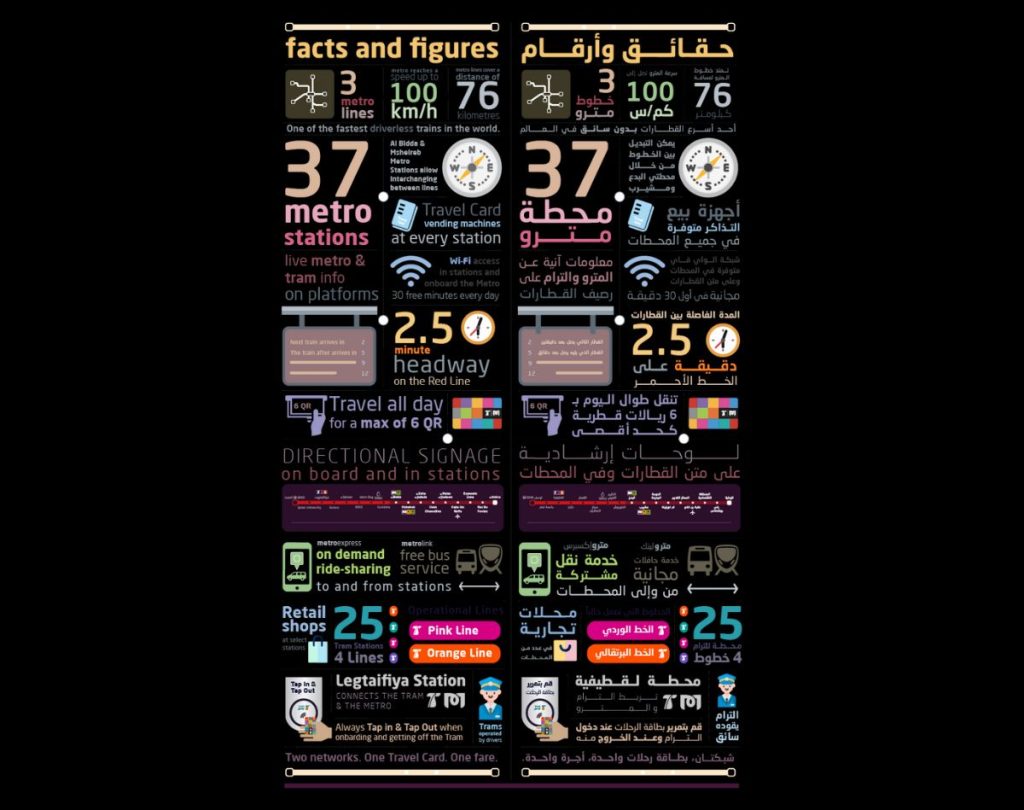
Mobile App Features
The Qatar Rail mobile app offers several useful features:
- Real-time train tracking
- Journey planning
- Travel card management
- Service updates and announcements
COVID-19 Precautions
In response to the global pandemic, Doha Metro has implemented several safety measures:
- Mandatory face masks for all passengers
- Regular sanitization of trains and stations
- Social distancing markers in stations and on platforms
- Thermal scanning at station entrances
General Safety Features
The metro system is equipped with various safety features:
- CCTV surveillance throughout the network
- Emergency call points on platforms and in trains
- Automated platform screen doors
- Trained security personnel at all stations
In conclusion, the Doha Metro represents a significant leap forward in Qatar’s public transportation infrastructure. With its extensive network, modern facilities, and integration with other transport modes, it offers residents and visitors an efficient and sustainable way to navigate the city. As the system continues to expand and evolve, it will play an increasingly important role in shaping Doha’s urban landscape and supporting the country’s long-term development goals.
Here is the pdf version of the map.
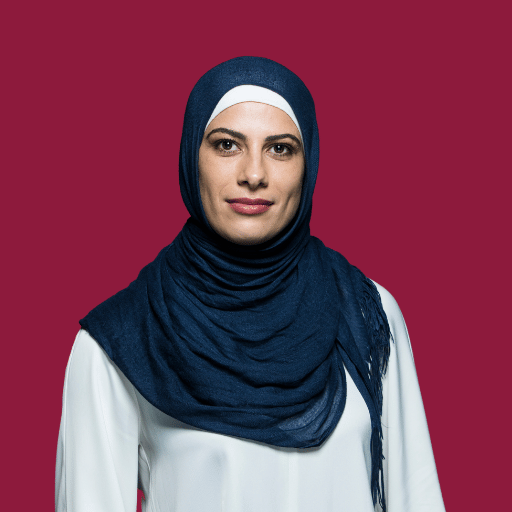
Ammara Abdullah is an experienced writer and editor specializing in technology and digital trends. With over 5 years of experience, she produces insightful articles on emerging tech, consumer electronics, and digital culture. Ammara holds a degree in journalism and is passionate about making complex topics accessible to readers.
